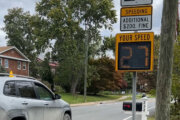Most bond investors know that reaching too hard for higher yield means taking on a lot more risk, but experts say that with some sleuthing it’s possible to find a sweet spot, where more yield is worth it.
So, what should the investor look for? Where do the higher-yielding securities fit in the portfolio? What type of investor can safely tread this line?
Most experts say fine-tuning risk and reward by adjusting credit risk can pay off if not taken too far, but is not a game for amateurs.
“The sweet spot is a moving target based on prevailing economic conditions, credit spreads, interest rates and investor risk tolerance,” says JB Golden, vice president at Advisors Asset Management in Monument, Colorado.
[See: 7 Bond Funds to Buy as Rates Rise.]
“The additional compensation for buying higher yield bonds is not enough to make it worth the extra risk today,” says Chase Hinderstein, a portfolio manager with The Wise Investor Group at Robert W. Baird & Co. in Reston, Virginia. “Now is not a good period to be adventurous and add high risk bonds to an investment portfolio.”
Still, Matt Hylland, an investment advisor at Hylland Capital Management in North Liberty, Iowa, says long-term investors should not always shun bonds that fall short of top quality.
“Over long periods of time, an investor in the lower end of investment grade bonds would have been rewarded for that extra risk,” Hylland says, “But if you intend to sell those bonds in a short period of time, or can’t afford a loss on your investment, stick to higher-rated securities.”
He says that since the depths of the financial crisis in 2009, the SPDR Bloomberg Barclays High Yield Bond exchange-traded fund (ticker: JNK) has returned 273 percent, not so far below the S&P 500’s 311 percent. But he observes this includes reinvesting all earnings, and that lower-rated bonds tend to be about as volatile as stocks and are not for those prizing safety.
“In general, lower-rated bonds tend to not perform like bonds at all,” Hylland says.
Bonds, as most investors know, are loans from the bond buyer to the issuer. Issuers with shaky finances or risky business models have to pay higher yield to attract bond buyers, just as a home buyer with a short job history or string of late loan payments must pay a higher mortgage rate.
For the investor, the big risk is that the issuer will default, or fail to make the promised interest payments or to return the investor’s principal when the bond matures. Any hint this might happen can drive down the bond’s price as it is traded in the secondary market. Since the interest payment, or coupon, is a dollar amount fixed when the bond is issued, a lower price means higher yield, earnings divided by price.
The safest bonds are U.S. Treasurys because investors assume the government will use its taxing authority to make good on its payments. At the other end of the spectrum are high-yield bonds, or junk bonds, issued by companies with credit so tarnished they must pay three, four or five times as much as Treasurys to attract investors.
Private ratings agencies give investors a useful tool for viewing a bond’s credit quality. Moody’s, the best known, rates bonds from Aaa, a very safe investment grade, to C, a bond in default. Investment grade gradually declines through Aa, A, and Baa. Ba and B are speculative junk bonds, and Caa, Ca and C are highly speculative junk.
In one of the periods of heaviest corporate bond defaults, the 10 years beginning in January 1983, 3.526 percent of Aaa-rated bonds bought at the start defaulted, according to Moody’s data. The lowest investment grade, Baa, had an 8.966 default rate, while 73 percent of junk bonds defaulted.
Many institutional investors, funds and individuals choose to buy only Aaa investment grade bonds, while others walk on the wild side with low-rated bonds that pay well and could rise in price but could also rack up big losses if things don’t go well.
Hylland says investors can earn a premium with bonds that carry a bit more risk but are still pretty safe.
[See: 10 Long-Term Strategies That Work.]
“Today an investor gets about 0.83 percent extra yield by investing in the lower end of investment grade bonds compared to AAA rated,” he says, using the top grade issued by Standard& Poor’s and Fitch, the other major rating companies.
He says his research has found that long-term investors can do better with investment grade corporate bonds than with safer Treasurys, even under the worst conditions.
Ryan O’Malley, fixed income portfolio strategist at Sage Advisory in Austin, Texas, says, “We’ve studied historical default rates and volatility and come to the conclusion that BBBs and BBs offer the best risk/reward profile.”
From S&P and Fitch, BBB is the lowest investment grade and BB the highest junk grade.
“While BBBs have historically offered around 0.5 percent [higher yield] compared to A-rated issuers, the uptick in defaults and difference in recovery values compared to single-A credits is [minimal],” O’Mally says.
Most advisors urge investors not to plunge into low-rated bonds, even though yields may be alluring.
“Non-investment grade bonds should be limited to no more than 15 percent of an investor’s bond portfolio,” says ReKeithen Miller, portfolio manager with Palisades Hudson Financial Group in Atlanta.
“Bonds are supposed to be a stabilizing force in an investor’s portfolio when stocks aren’t performing well,” he says. “Non-investment grade bonds tend to be more volatile than investment grade bonds when markets are under stress. Therefore, it’s prudent to limit the amount of exposure in your portfolio to ensure bonds are performing their intended role, acting as a ballast for your portfolio.”
Finding a sweet spot where a little extra risk on paper makes sense if it boosts return a tad is a tightrope walk, and many investors will find it’s not worth the work and worry, or it takes skills they simply don’t have, Golden says.
“Investors should also understand, as bond holders, they are creditors of the issuer and not equity owners,” Golden says.
“Focus on trends that speak to a given issuers ability to repay their debt, such as free cash flow and debt-outstanding,” he says. “With all that being said we would caution against the ordinary investor embarking down a path of trying to analyze the credit metrics of individual bond issues. This is a monumental task with many moving parts and most financial advisors rely on third-party analysis given the complexity.”
[See: 7 Monthly Dividend Stocks for Steady Income.]
So, long-term investors may do a little better moving a notch or two down the investment-grade ladder, but generally should stay away from high-risk bonds unless they really know what they are doing and can stick out the downturns.
More from U.S. News
The 10 Most Valuable Auto Companies in the World
11 Steps to Make a Million With Your 401k
9 Vacation Stocks to Buy for a Summer Boost
How to Find the Sweet Spot When Investing in Bonds originally appeared on usnews.com







